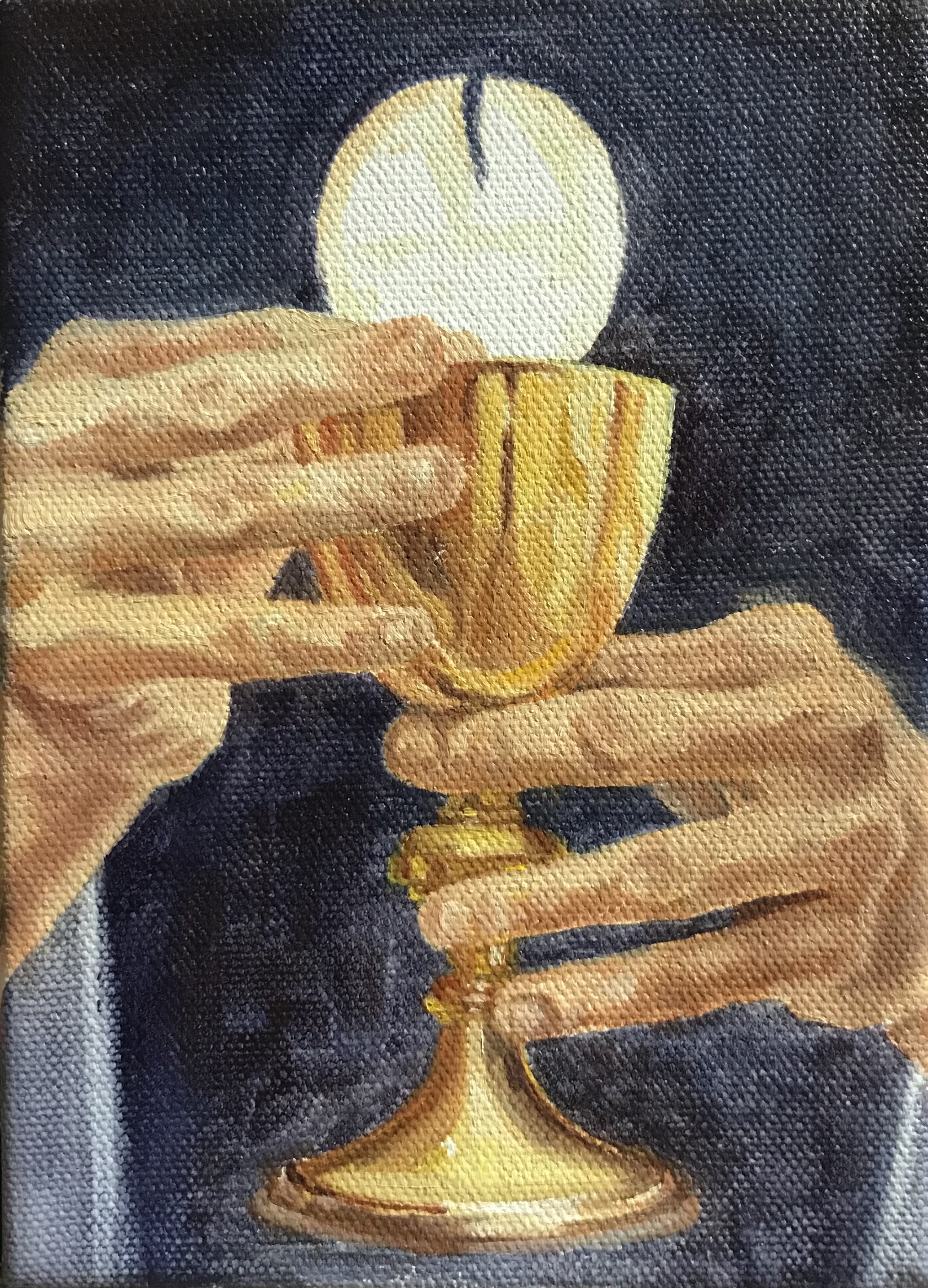
Today we are celebrating the Solemnity of Corpus Christi. In Latin this literally means: Body of Christ. The USCCB provides us with the official English title: Solemnity of the Body and Blood of Christ. And if we read the readings, we can see that the main focus is in fact not flesh, but blood: the blood of the covenant.
Something that caught my attention as I was meditating on the first reading was the fact that the liturgy has not included several contextual verses of the first section of Exodus Ch. 24. In particular, after the people and the altar have been sprinkled with blood, verses 9-11 mention the people eating and drinking in the presence of God without fear and seeing Him without dying. They were of course eating the flesh of the sacrificial victim whose sprinkled blood bound them in communion with each other, with the altar of sacrifice, and with God. Perhaps the theme of the covenant meal, the Eucharist, is too obvious and the Church wants us to discover something else.
Something else worthy of note is the order of things. At the Passover, the blood marks the doorposts before the family partakes together of the lamb’s flesh. In Exodus, the blood marks the people and the altar before the flesh is shared. But at the Last Supper, Christ’s flesh is shared before His blood is shared and before His blood is shed the following day on the Cross. It is as though the blood of the old covenant paved the way for communion with God, which itself paved the way for a deeper communion with God. The blood of the covenant, sprinkled on the people, made them servants of God. At the Last supper Jesus says, “I no longer call you servants, but friends.” There is one further cup that Jesus will not drink until He is in the kingdom of God.
Blood sprinkled represents a life attachment of service – God attaches Himself to the people by this blood, and the people are to attach themselves to the service of God. Blood was never to be drunk, the blood of bulls symbolized the raw animal-like passion that may also overtake human flesh. Blood on the altar is understood to mean that we ought to attach the raw vigor of our life to God and the things of God, “Love the Lord your God with all your mind, with all our soul, with all your heart and with all your strength.” Blood on our neighbors as on ourselves means we ought to show the same devotion to God as to our neighbor, “And love your neighbor as yourself.”
As Jesus calls us His friends, He invites us to a deeper communion in His blood. His blood is given as a drink – no longer poured out or sprinkled on the surface, no longer an invitation and sign of attachment, but Life itself poured directly into our hearts. This Life-Blood drowns out all sin, erases all iniquity, and fills our hearts with the same Love that pulses through the veins of Jesus. This is the mystery of divine hospitality, a meal that not only brings us closer to God, but causes us to become one flesh with Him: we are fully welcomed into fellowship with the Trinity.
The exchange of gifts and sharing of food creates fellowship between the parties, as does worshiping together[1]
The most impressive aspect of the ritual, however, involves applying sacrificial blood to both the people and the altar (24:6, 8). This act is heavily freighted with symbolism. Exodus 24 describes a rite of passage whereby Israel enters into vassalage under Yahweh. Initiation rituals generally feature an inflicted trauma, real or symbolic, that symbolizes the candidate’s death. Having survived his ordeal, he is symbolically reborn to a new status (Propp 2004a). In Exodus 24, the people are literally bloodied, thus symbolically injured.[2]
Exodus 24 may in fact be read as the mirror image of the Pesaḥ. The blood ritual in Exodus 12 initiates Israel’s freedom; the blood ritual of Exodus 24 terminates it. Released from involuntary servitude to Pharaoh, Israel voluntarily enters Yahweh’s servitude. (Compare 21:6, where a man becomes a permanent slave by standing “before the Deity” [see NOTE] and having blood drawn from his ear.) Later Judaism would apply the phrase of 24:8, dam bərît ‘Covenant blood,’ to the surgical operation whereby each Jewish boy separately enters into the Covenant, symbolically dramatizing the conceit that all later generations stood with their ancestors at Sinai (see already Deut 5:2–4; 29:13–14). The people will finally leave Sinai after making the second Pesaḥ (Num [P]).[3]
In the Christian Bible, the sacrifices at Sinai that inaugurate the First Covenant are the explicit type of the final Covenant, inaugurated by the joint slaughter of God and Man in the person of Jesus, who enjoins his followers to drink “my Covenant blood” (Mark 14:24).[4]
In fact, they all share the same table with God (v. 11): the description is reminiscent of a royal banquet, in which the guests are treated on a par with the host: thus, the king of Babylonia will show his benevolence to King Jehoiachin by having him as his dinner guest (cf. 2 Kings 25:27–30). But it is, above all, a ritual banquet in which sharing the same table shows the intimate relationship that exists between God and the leaders of the people, and shows too that both parties are mutually responsible for the Covenant now being sealed.[5]
The Covenant therefore is not only a commitment to obey its precepts but, particularly, the right to belong to the holy nation, which is God’s possession. At the Last Supper, when instituting the Eucharist, Jesus uses the very same terms, “blood of the Covenant”, thereby indicating the nature of the new people of God who, having been redeemed, is fully “the holy people of God” (cf. Mt 26:27 and par.; 1 Cor 11:23–25).[6]
[1] Propp, W. H. C. (2008). Exodus 19–40: a new translation with introduction and commentary (Vol. 2A, p. 308). New Haven; London: Yale University Press.
[2] Propp, W. H. C. (2008). Exodus 19–40: a new translation with introduction and commentary (Vol. 2A, p. 308). New Haven; London: Yale University Press.
Pesaḥ Israelite festival/sacrifice antecedent to Jewish Passover
Deity translation for ʾĕlōhîm ‘God’ (NOTE to 1:17)
Pesaḥ Israelite festival/sacrifice antecedent to Jewish Passover
[3] Propp, W. H. C. (2008). Exodus 19–40: a new translation with introduction and commentary (Vol. 2A, p. 309). New Haven; London: Yale University Press.
[4] Propp, W. H. C. (2008). Exodus 19–40: a new translation with introduction and commentary (Vol. 2A, p. 309). New Haven; London: Yale University Press.
[5] Gavigan, J., McCarthy, B., & McGovern, T. (Eds.). (1999). The Pentateuch (p. 346). Dublin; New York: Four Courts Press; Scepter Publishers.
[6] Gavigan, J., McCarthy, B., & McGovern, T. (Eds.). (1999). The Pentateuch (pp. 347–348). Dublin; New York: Four Courts Press; Scepter Publishers.

